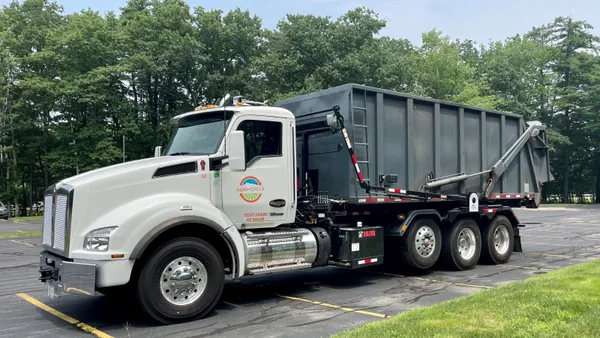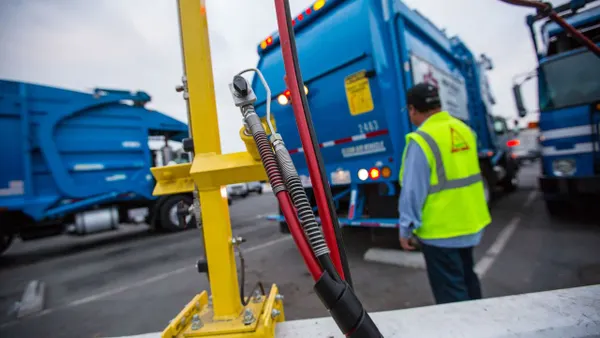Dive Brief:
- Chipotle Mexican Grill (Chipotle) announced Monday it is working toward diverting 50% of its waste across all stores from landfill by 2020. Chipotle had a diversion rate of 40% in 2017, according to the company.
- The goal is further broken down to ensure 100% of Chipotle restaurants have recycling by 2020 and 20% will have composting by that same year.
- The chain is also working on goals related to source reduction and food donation, not focusing just on disposal and processing. Chipotle says 80% of its restaurants will work with the Harvest Program, donating leftover food to local community programs. Employees also practice "mindful prep" and right-sizing services to each individual store, to reduce leftover food.
Dive Insight:
According to its own data, Chipotle has already made significant strides in reducing waste coming out of its restaurants. According to a 2016 Sustainability Report, for example, restaurants were able to cut down on orders of several food items (avocados 3%, limes 5%, red onions 15% and bell peppers 20%) by training employees in "mindful prep" between 2014 and 2015, when adjusted for sales.
Chipotle also says it implements waste audits at its restaurants, which has already lead the chain to stop using plastic wrap and instead use reusable plastic lids, since the wrap cannot be easily diverted. The chain is also going to bring on a full-time "diversions coordinator" to oversee the company's efforts in reaching 50% by 2020.
Chipotle is joining a growing list of corporations that are making sustainability and diversion pledges as consumer awareness of the issues grow. Coca-Cola wants to recycle 100% of its packaging by 2030; Dunkin' Donuts plans to stop using polystyrene foam cups by 2020; and McDonald's wants to recycle all guest packaging by 2025.
It's important for the industry to pay close attention to these diversion goals set by companies as they can involve big shifts in waste streams. Chipotle moving to increase access to compost in its restaurants will likely create a demand for commercial compost operations, for example.









